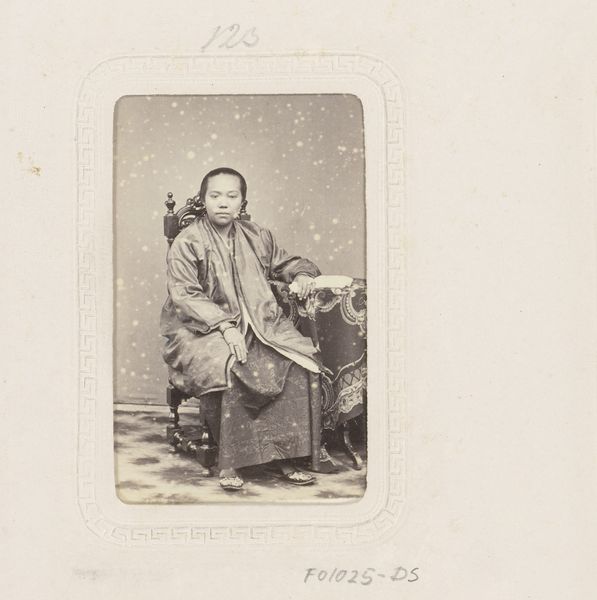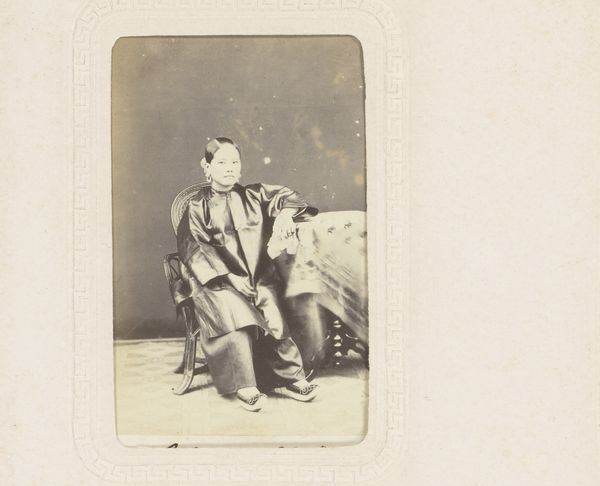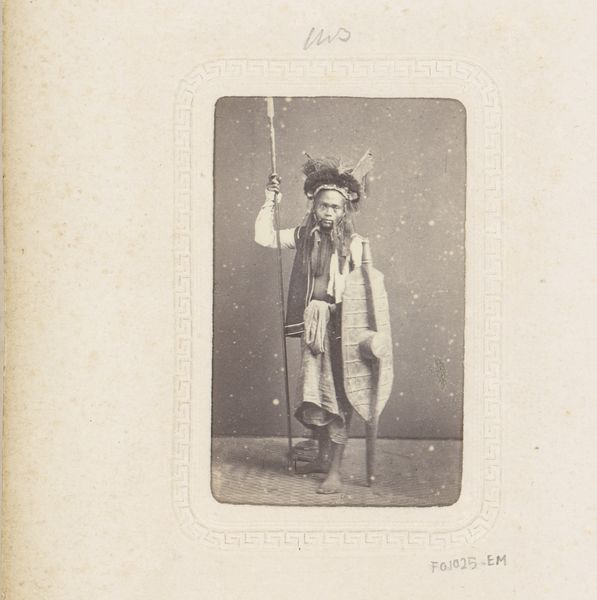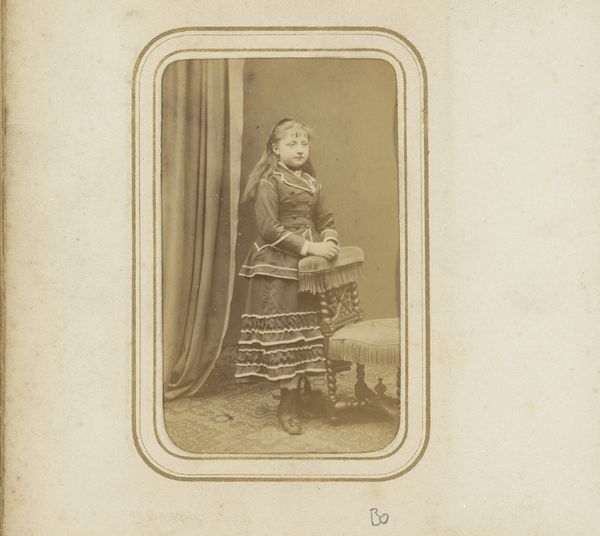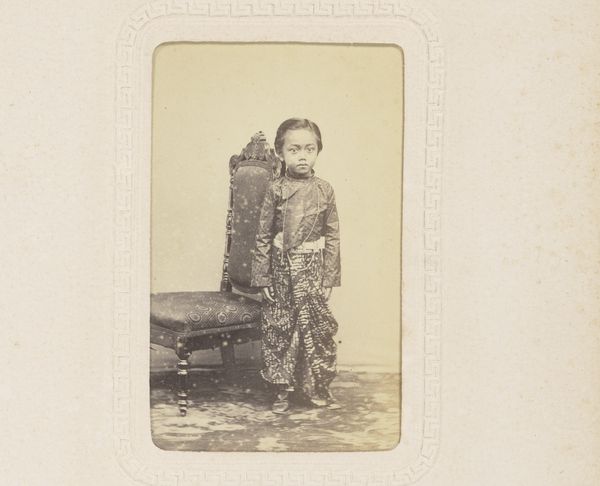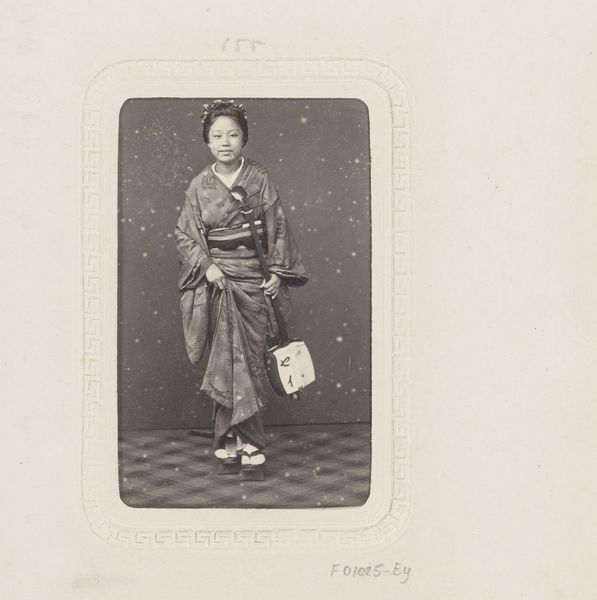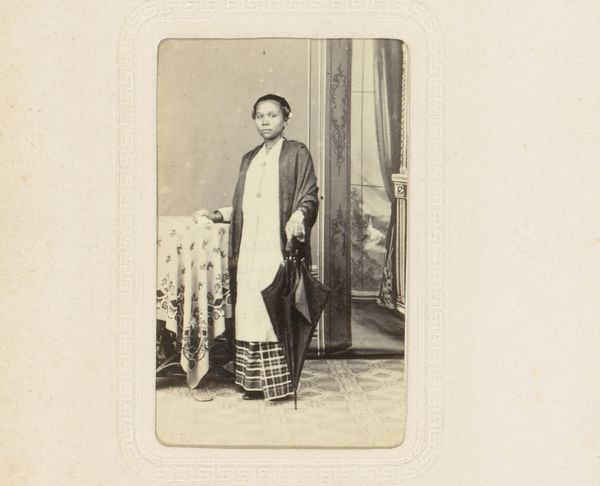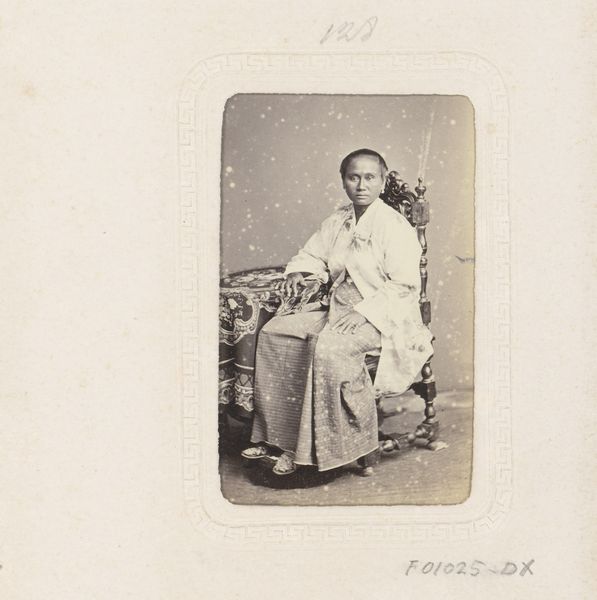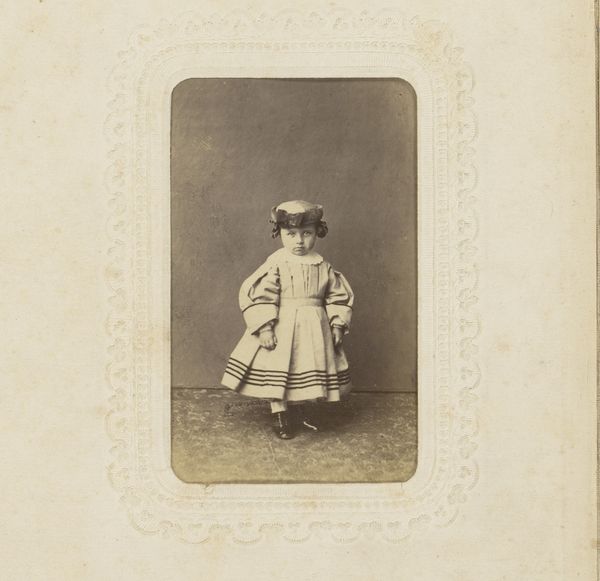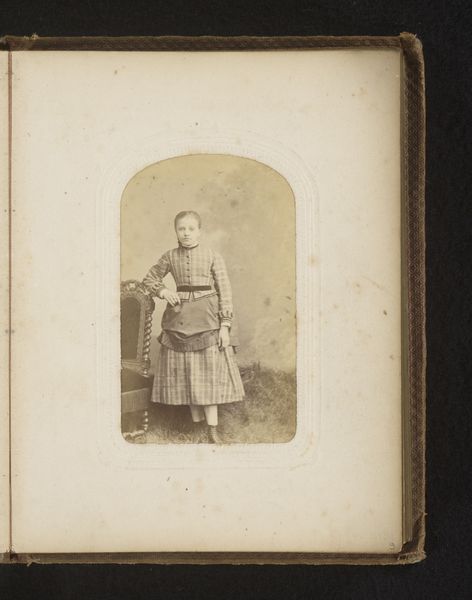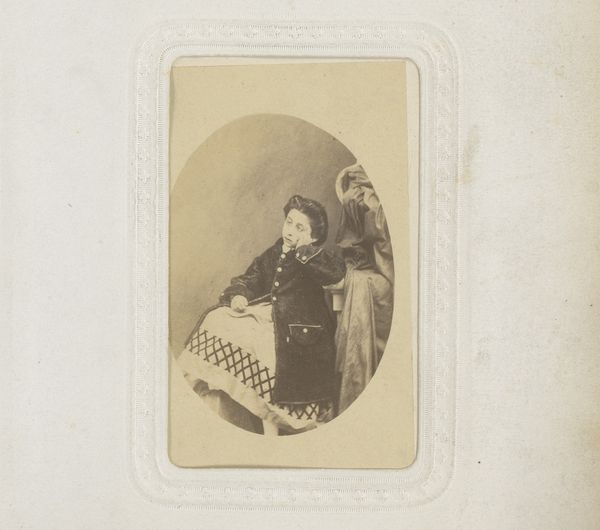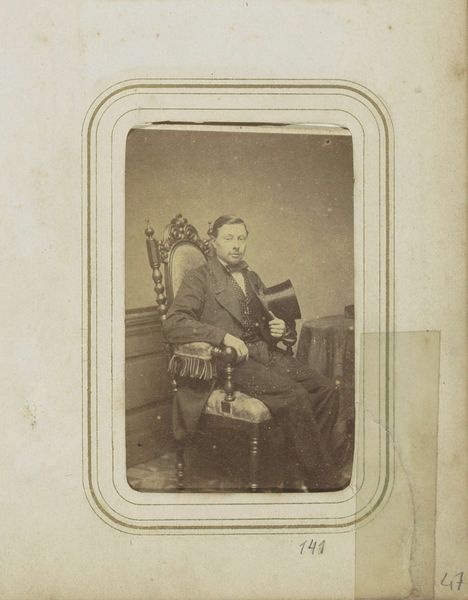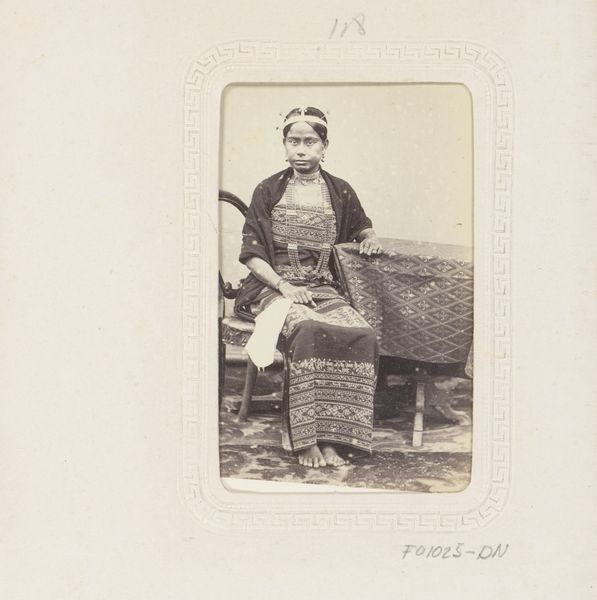
photography
#
portrait
#
asian-art
#
archive photography
#
photography
#
historical photography
#
orientalism
#
19th century
Dimensions: height 85 mm, width 52 mm
Copyright: Rijks Museum: Open Domain
Editor: This photograph, titled "Portret van een Chinese vrouw uit Macao," created sometime between 1867 and 1880 by G.R. Lambert & Co., shows a seated woman. It feels very staged, and I'm struck by the way she is looking directly at the camera. How would you interpret this work? Curator: Immediately, I'm drawn to the cross-cultural symbolism at play here. Consider the photograph itself: a Western medium used to capture an image of a Chinese woman. This simple act is laden with colonial-era power dynamics. Editor: Power dynamics? Curator: Indeed. Photography, in its infancy, became a tool of documentation, but also, consciously or not, of objectification. What cultural signifiers do you see? Consider her clothing, adornments... what might these reveal about her status, or the photographer's intent? Editor: I see the ornate headdress and her embroidered robe. I guess they represent a certain social standing? The photographer probably chose these items to signify something about Chinese culture to a Western audience? Curator: Precisely! These curated elements play into the Western imagination of the "Orient." It’s not necessarily a neutral portrait, but a carefully constructed image designed to evoke certain feelings and project specific cultural associations, reflecting the aesthetic and psychological trends within orientalism at the time. What sort of "memory" is constructed for the audience? Editor: I guess, in that sense, it makes you wonder how "true" of a depiction it is. I never thought of photography in this way before. It's a powerful reminder that images, especially historical ones, carry so much cultural baggage. Curator: Exactly! It's not merely a portrait, it’s a cultural artifact layered with meaning and historical context.
Comments
No comments
Be the first to comment and join the conversation on the ultimate creative platform.
